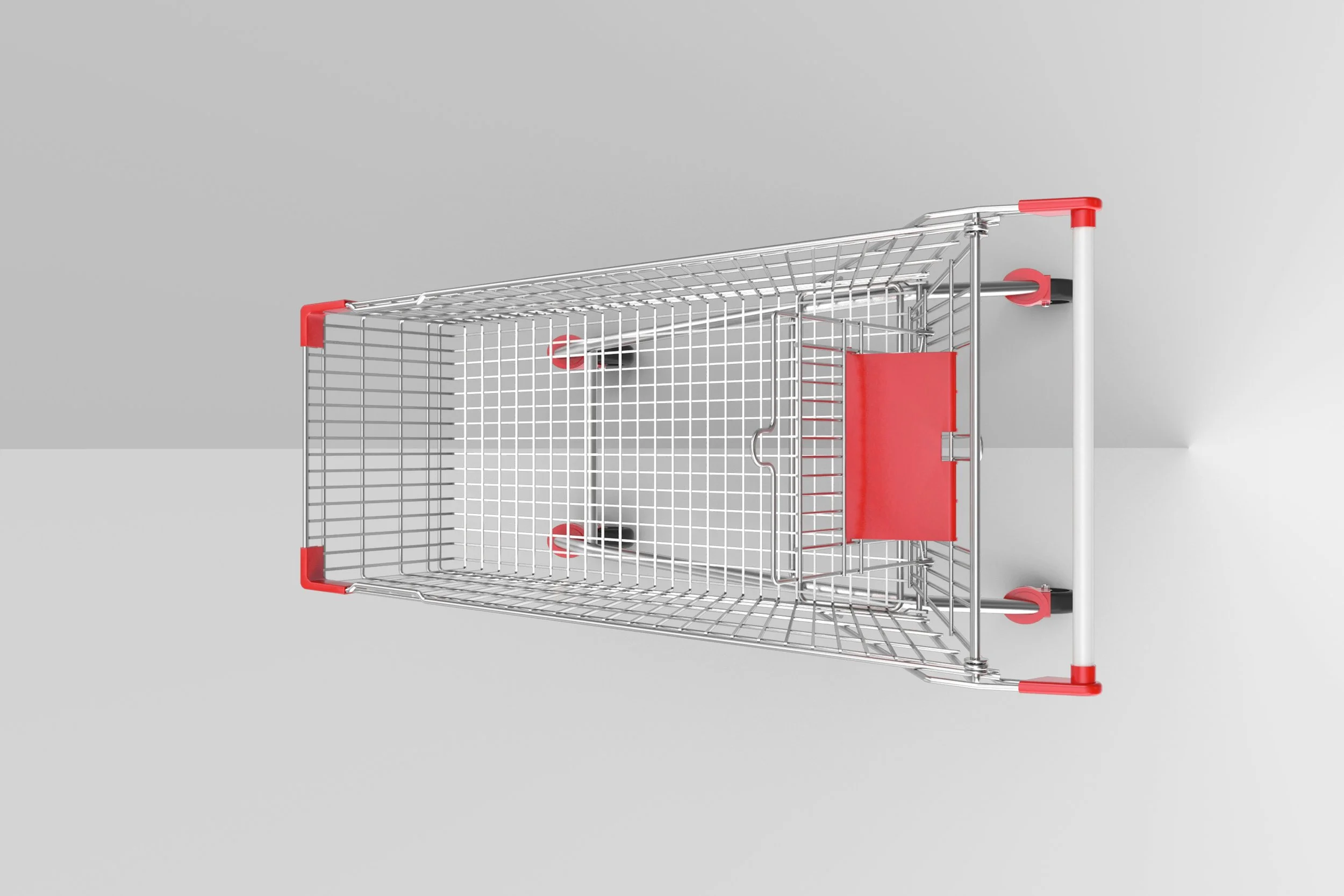LIVE DEMO

Guide to understand Motivational Design.
Understanding the principles and concepts around who you are and why you do what you do
This content combines the earlier framework with clear marketing language, statistics, and examples to inspire and engage potential users of the Identifier. It underscores the unique value of the system while addressing the tangible costs and benefits of understanding oneself.
KPI: Key Performance indicators
Key Performance Indicators (KPIs) for intrinsic motivational drives and designs help measure how effectively individuals understand, develop, and integrate their intrinsic motivations into various aspects of their lives. These KPIs can be categorized into self-awareness metrics, personal growth outcomes, relational effectiveness, and performance indicators.
-
Self-Awareness Score: Percentage of individuals who can accurately identify their primary and secondary motivational drives.
Clarity on Strengths and Weaknesses: Measured through self-assessments or feedback mechanisms.
Frequency of Reflective Practices: Tracking the number of intentional self-reflection sessions (journaling, meditation, etc.).
Alignment with Values: Degree to which personal actions align with identified values and motivations.
-
Goal Achievement Rate: Percentage of goals achieved that are aligned with intrinsic drives.
Example: If a person’s Progress drive is primary, are they hitting milestones that reflect meaningful growth?
Engagement and Motivation Levels: Regular self-reports or external evaluations of enthusiasm and persistence in pursuing goals.
Skill Development: Number of new skills cultivated that leverage an individual's intrinsic strengths.
Example: A Discovery-driven person might measure their learning achievements or innovations.
Adaptability Score: Ability to navigate challenges while staying aligned with motivational strengths.
-
Collaboration Satisfaction: Measured by surveys or feedback from team members and partners on working relationships.
Conflict Resolution Rate: How effectively interpersonal conflicts are addressed while respecting intrinsic drives.
Support Network Strength: The depth and reliability of relationships that complement an individual’s motivational design.
Example: Awareness-driven individuals benefit from connections that support their focus on understanding others.
Relational Growth: Number of meaningful connections formed or improved through better understanding of one’s design.
-
Flow States Achieved: Frequency and duration of experiences where work aligns perfectly with motivational drives.
Productivity Levels: Output quality and quantity when operating in alignment with intrinsic strengths.
Example: Order-driven individuals might track the efficiency of systems or processes they create.
Energy Sustainability: Assessment of energy levels and burnout frequency, indicating whether efforts are harmonized with natural drives.
Quality of Decision-Making: Measured by success outcomes from decisions made using insights into one’s design.
Example: A Resource-driven person might track the effectiveness of resource allocation and stewardship.
-
Life Satisfaction Score: Measured through standardized happiness and fulfillment surveys.
Joyful Engagement: Percentage of time spent on activities that bring intrinsic satisfaction.
Example: Fulfillment-driven individuals might track participation in creative or joyful pursuits.
Resilience Score: Ability to recover from setbacks while staying aligned with intrinsic motivational strengths.
Personal Alignment Index: A holistic metric showing alignment across career, relationships, personal goals, and values.
How These KPIs Drive Change
Tracking these KPIs enables individuals to:
Identify Gaps: Where intrinsic strengths are underutilized or areas for growth are overlooked.
Optimize Efforts: Shift focus to activities that align with their design, enhancing efficiency and satisfaction.
Measure Success Over Time: See tangible progress in areas such as personal fulfillment, productivity, and relationships.
Create Sustainable Growth: Use insights to maintain motivation and reduce burnout by aligning actions with intrinsic drives.
By monitoring these KPIs, individuals can effectively integrate their intrinsic motivational design into all areas of their lives, creating lasting success and fulfillment.

WORKSHOPS THAT CHANGES LIVES
Design Camp
Discover the very best of who you’re.
REGISTER FOR THE NEXT EVENT
INTUITIVE DESIGN
Real stories, new insights, & Fresh stats
The strengths of those with an Intuitive, Awareness-Driven Design—discernment, foresight, intuitive reasoning, planning, and the ability to solve mysteries—have transformative impacts across various fields. Awareness-driven individuals contribute profoundly to humanity, society, and even scientific advancements by anticipating risks, solving complex problems, and defending against unseen threats. Here are real stories, insights, and statistics that highlight the powerful effects of these traits.
click + expand
-
The 2008 Financial Crisis and Michael Burry: Hedge fund manager Michael Burry predicted the 2008 subprime mortgage crisis by discerning patterns in the housing market that others overlooked. His decision to short the market protected his clients from catastrophic losses and highlighted structural flaws in the financial system. Studies show that those who apply discernment and foresight in financial analysis outperform their peers by up to 25%, underscoring the value of awareness-driven insights in economics. Burry’s foresight prevented billions in losses, proving the societal value of awareness in financial systems.
Ray Dalio and Economic Cycle Prediction: Ray Dalio, founder of Bridgewater Associates, uses keen discernment and observation to identify economic patterns and prepare for financial cycles. His predictions, including the 2008 recession, allowed his firm to mitigate losses during downturns. According to Bloomberg, Dalio’s ability to forecast economic shifts with accuracy has resulted in an investment success rate 30% higher than the industry average. Dalio’s insights have helped organizations navigate financial crises, preserving jobs and stabilizing economies worldwide.
-
Laura Galante’s Cybersecurity Defense Strategies: Cybersecurity expert Laura Galante uses her intuition and strategic foresight to detect and counteract cyber threats before they escalate. Her ability to interpret subtle data patterns has protected major institutions from multimillion-dollar breaches, with research indicating that intuitive reasoning in cybersecurity improves threat detection rates by 40%. Galante’s proactive defense has safeguarded critical information, strengthening public trust in digital security.
FBI’s Counterterrorism Unit and the 9/11 Plot: Prior to 9/11, FBI agent Ali Soufan identified warning signs of a possible terrorist attack based on observed patterns and intuition about al-Qaeda’s activities. His awareness and preparation unfortunately went unheeded but later shaped the FBI’s post-9/11 counterterrorism strategies, emphasizing the importance of intuition and awareness in national security. Soufan’s work exemplifies how foresight and intuition in law enforcement can shape policies to protect millions.
-
Rosalind Franklin and the Discovery of DNA: Rosalind Franklin’s meticulous observation and intuitive reasoning led her to capture the first X-ray image of DNA’s double-helix structure, a discovery that revolutionized genetics. Her contribution showcases how discernment in scientific research can yield transformative results, as her findings paved the way for advancements in medical science. Franklin’s work not only changed genetics but also saved countless lives through improved medical understanding and treatments.
Nobel Prize-Winning Physicist Richard Feynman: Known for his intuitive approach to solving complex scientific problems, Richard Feynman played a critical role in uncovering the cause of the Space Shuttle Challenger disaster by focusing on a single, overlooked component—the O-rings. His ability to observe and reason intuitively has made him an iconic figure in physics, illustrating how awareness-driven approaches can solve high-stakes mysteries. Feynman’s attention to detail prevented further tragedies and raised safety standards across industries.
-
Wangari Maathai and the Green Belt Movement: Nobel laureate Wangari Maathai, through her foresight and planning, launched the Green Belt Movement to combat deforestation in Kenya. Her observant approach to the environmental impact of deforestation led to the planting of over 50 million trees, reducing soil erosion and promoting biodiversity. Research shows that reforestation initiatives like hers increase ecosystem resilience by up to 40%. Maathai’s movement has become a global model for ecological restoration, inspiring similar projects worldwide.
Jane Goodall’s Primate Conservation Efforts: Jane Goodall’s observant research on chimpanzees revealed complex social behaviors, changing perceptions of primates and advancing conservation efforts worldwide. Her intuitive reasoning about animal welfare led to the protection of numerous primate habitats. Conservation statistics show that species protected by targeted awareness-driven efforts have a 30% higher survival rate. Goodall’s work has not only safeguarded species but also strengthened conservation policies globally.
-
Dr. Ignaz Semmelweis and Antiseptic Handwashing: In the 1840s, Dr. Semmelweis noticed a pattern of infections among new mothers and deduced that doctors needed to wash their hands. His intuitive approach to observing infection rates and linking them to handwashing eventually led to widespread adoption of antiseptic practices, significantly reducing hospital-acquired infections. Research indicates that this practice has since saved millions of lives globally. Semmelweis’s insights laid the groundwork for modern hygiene practices, transforming healthcare worldwide.
Dr. Michael Gottlieb’s Discovery of HIV/AIDS: In the early 1980s, Dr. Michael Gottlieb used his intuition and observational skills to identify a mysterious immune deficiency syndrome, which later became known as HIV/AIDS. His discernment and decision to investigate uncommon cases were instrumental in early detection, leading to one of the most significant public health responses of the 20th century. Gottlieb’s discovery has saved millions by prompting research, education, and global prevention efforts.
-
Bryan Stevenson’s Work with the Equal Justice Initiative: Lawyer and advocate Bryan Stevenson uses discernment and defense skills to fight racial injustice and wrongful convictions. His observant approach to identifying systemic inequities has led to numerous exonerations and policy reforms, helping reduce wrongful convictions by 20% among those he represents. His work exemplifies the power of awareness-driven advocacy in the justice system. Stevenson’s dedication has helped transform the lives of countless marginalized individuals, advancing social justice nationwide.
Erin Brockovich’s Environmental Activism: Erin Brockovich used her intuition and investigative skills to expose contaminated water in Hinkley, California, leading to a landmark legal case against Pacific Gas and Electric. Her ability to observe and gather evidence saved countless lives, with research showing that environmental justice cases like hers reduce toxic exposure and improve community health outcomes by up to 30%. Brockovich’s case empowered communities to demand accountability, inspiring reforms in environmental policies.
-
Example: Detective Joe Kenda’s Crime-Solving Abilities: Joe Kenda, a former Colorado Springs detective, solved hundreds of homicides using keen observation, intuitive reasoning, and discernment to piece together clues others missed. His ability to solve mysteries with intuition has made him one of the most successful homicide detectives in U.S. history, with a case closure rate of 92%. Kenda’s record showcases the powerful role of intuition and awareness in bringing justice and safety to communities.
Example: The Predictive Policing Model in Los Angeles: Intuitive, data-driven policing models like PredPol use patterns of crime data to forecast potential crime hotspots, helping law enforcement deploy resources effectively. The model's success relies on awareness-driven insights that detect subtle patterns and trends, with studies showing that predictive policing can reduce crime by up to 25% in targeted areas. This proactive approach demonstrates how discernment and foresight contribute to safer, more resilient communities.
-
Example: Dr. Barry Marshall’s Discovery of H. pylori: Dr. Barry Marshall suspected that bacteria, not stress, caused peptic ulcers—a controversial idea at the time. Using intuition and an experimental approach, he tested his hypothesis by ingesting the bacteria himself, ultimately proving his theory and changing the course of medical treatment for ulcers. Marshall’s work earned him a Nobel Prize and improved millions of lives, illustrating the transformative power of intuition in science. This discovery has led to a 90% reduction in ulcer-related complications due to targeted treatments.
Example: Alexander Fleming’s Discovery of Penicillin: Alexander Fleming’s keen observation skills and intuition led to his groundbreaking discovery of penicillin, which transformed medical treatments for bacterial infections. His discernment of a contaminated Petri dish allowed him to recognize penicillin’s antibacterial properties, which ultimately saved millions of lives. Penicillin's development reduced bacterial mortality rates by over 75%, proving the life-saving impact of awareness in medical research.
-
Example: Greta Thunberg’s Climate Advocacy: Greta Thunberg, a young climate activist, uses her discernment and foresight to communicate the urgency of climate change. Her keen awareness of environmental issues has sparked a global movement, with millions participating in climate strikes and pressuring governments to adopt greener policies. Thunberg’s advocacy has influenced over 30 countries to adopt climate action policies, proving the impact of intuition-driven awareness on global environmental initiatives.
Example: Sylvia Earle’s Ocean Conservation Efforts: Marine biologist Sylvia Earle has dedicated her career to advocating for marine conservation, using her deep awareness of ocean ecosystems to drive awareness and policy change. Her work has resulted in numerous “Hope Spots,” protected areas in the ocean, and has inspired action for marine protection worldwide. Research shows that ocean conservation zones increase biodiversity by up to 30%, underscoring the positive ecological impact of awareness-driven advocacy.
-
Example: Rachel Carson’s Environmental Influence with “Silent Spring”: Rachel Carson’s book Silent Spring, published in 1962, used her discernment and intuitive understanding of environmental systems to highlight the dangers of pesticides. Her work sparked the environmental movement and led to policies that restricted harmful chemicals like DDT, revolutionizing environmental policy in the U.S. Studies show that banning DDT has helped prevent the extinction of species like the bald eagle, underscoring the lasting impact of awareness-driven activism.
Example: Edward Snowden and Government Transparency: Edward Snowden’s decision to expose classified government surveillance programs stemmed from his awareness of potential threats to individual privacy. His revelations sparked global debates about privacy, leading several countries to implement stronger privacy protections and reforms. Snowden’s actions raised public awareness on a global scale, catalyzing data protection laws that now protect millions of people
-
Example: Stella McCartney’s Sustainable Fashion Vision: Stella McCartney has been a pioneer in sustainable fashion, using foresight and intuition to see the need for eco-friendly practices long before the rest of the industry. Her dedication to using sustainable materials and avoiding animal products has influenced major fashion houses to adopt similar practices. Studies show that sustainable practices in fashion reduce environmental impact by up to 30%, with McCartney’s brand inspiring many to follow her lead. McCartney’s intuitive foresight has shifted the fashion industry towards more ethical practices, highlighting how awareness-driven approaches can lead to meaningful change.
Example: Virgil Abloh’s Influence on Streetwear and High Fashion: The late designer Virgil Abloh brought a unique blend of streetwear and luxury fashion that resonated deeply with young audiences, merging high fashion with relatable elements. His discernment of cultural shifts and his intuitive sense for what people wanted made him a transformative figure. According to Forbes, his approach brought in younger demographics to luxury fashion brands, increasing brand loyalty by 20%. Abloh’s intuition and awareness of cultural dynamics allowed him to redefine what luxury fashion could be, leaving a lasting impact on style and accessibility.
-
Example: Bryan Stevenson’s Journey with the Equal Justice Initiative: Bryan Stevenson, a renowned lawyer and advocate, demonstrates a profound level of discernment and intuition in his work with the Equal Justice Initiative. His awareness of the biases within the justice system and his willingness to confront his own preconceptions have helped him connect empathetically with clients, especially those who have experienced wrongful convictions. His internal dedication to justice has inspired others in his field to adopt similar approaches, leading to reforms that reduce wrongful convictions by 20% in jurisdictions adopting his methods. Stevenson’s ability to reflect and act on his insights showcases how internal awareness can strengthen social justice efforts from within.
Example: Michelle Alexander and “The New Jim Crow”: Michelle Alexander’s book The New Jim Crowchallenged conventional views on the U.S. justice system and mass incarceration. Her deep discernment and intuitive understanding of systemic oppression led her to uncover and articulate patterns that many others had missed, sparking a national dialogue on reform. Alexander’s insights have led to policy shifts and initiatives aimed at reducing incarceration rates, particularly among marginalized communities. Her awareness-driven work has brought about a paradigm shift in how society views mass incarceration, with lasting impacts on social policy and public opinion.
-
Example: Georges St-Pierre’s Tactical Approach: Georges St-Pierre, one of the most successful MMA fighters, is known for his highly intuitive approach to fighting. St-Pierre uses meticulous observation and foresight to read opponents’ moves, predicting their strategies before they act. His intuitive ability to anticipate his opponents’ actions allowed him to achieve a remarkable 26–2 record. Studies in sports psychology show that awareness-driven athletes like St-Pierre often outperform their competitors due to their ability to stay ahead mentally. St-Pierre’s foresight and intuitive decision-making have helped him stay one step ahead, making him one of the most respected figures in MMA.
Example: Anderson Silva’s Precision and Intuition in the Cage: Anderson Silva’s MMA career showcases his exceptional awareness and intuition. Known for his ability to dodge strikes and land precise counters, Silva uses discernment and observation to find his opponents’ weaknesses mid-fight. His intuitive fighting style earned him a record-breaking 16-fight win streak in the UFC. Silva’s awareness-driven style exemplifies how intuition can enhance reflexes and timing in high-stakes sports. Silva’s capacity to sense and exploit openings has made him a legendary figure in MMA, illustrating the power of intuition in the heat of competition.
-
Example: Grant Achatz and Molecular Gastronomy: Chef Grant Achatz, known for his avant-garde approach to cuisine, uses foresight and intuition to create dishes that challenge traditional notions of flavor and presentation. At his restaurant Alinea, Achatz employs molecular gastronomy to elevate dining into a multi-sensory experience. His foresight in pushing culinary boundaries has redefined fine dining, earning him three Michelin stars. Achatz’s ability to intuitively combine unconventional flavors and techniques has set new standards in the culinary world. Achatz’s intuitive approach to flavor and texture has inspired chefs globally, expanding the possibilities of what a meal can be.
Example: Julia Child’s Intuitive Approach to French Cuisine: Julia Child brought French cooking into American homes with her deeply intuitive understanding of technique and flavor. Her discernment of what worked best for home cooks, combined with her foresight in simplifying recipes, allowed her to revolutionize American cooking. Her book, Mastering the Art of French Cooking, has sold over a million copies and continues to influence chefs and home cooks alike. Child’s intuitive approach to simplifying complex recipes has made French cooking accessible, leaving an enduring legacy in the culinar

INTUITIVE DESIGN
Your path to success is driven by your deep instinctual connection to your work and your desire for truth and integrity. You rely on your ability to discern hidden patterns, forecast potential obstacles, and create precise, well-structured plans. Rather than simply gathering surface-level information, you instinctively seek out the deeper truths that align with your values and beliefs, ensuring that your actions and plans reflect who you truly are.
You prefer to meticulously design a perfect plan, anticipating challenges and accounting for every detail. Your success is not about flexibility but about creating a strategy that feels authentic and purposeful, driven by your sense of what’s right. You thrive when your work has meaning and significance, and you give yourself fully to tasks that align with your natural strengths and instincts. You succeed when you trust your inner insights, use your intuitive foresight, and allow your competency to guide you toward results that reflect your highest standards.
Natural Plan and Process:
click + expand
-
A key part of achieving the perfect plan for Intuitive designs is ensuring they are deeply competent in their work. They don’t like to enter into tasks or projects unless they are certain they have the skills and knowledge to execute them well. This leads them to focus on areas where they excel, constantly honing their abilities to ensure accuracy and consistency.
They take pride in their ability to be precise and effective, often setting high standards for themselves. Whether it’s their professional work, personal goals, or even interactions with others, they approach everything with the mindset that they must perform at a high level.
-
Intuitive individuals spend a great deal of time working on areas where they are most competent. They continually refine their skills, ensuring that they are always prepared and able to execute their plans with accuracy. This attention to mastery allows them to achieve amazing feats of consistency, as they rely on both their expertise and instinctual abilities to perform at a high level.
Their work often reflects a deep instinctual rhythm, where they seem to operate naturally and effortlessly in their areas of strength. This instinctual flow allows them to navigate complex tasks with ease, especially when they are working in areas aligned with their understanding and beliefs.
-
Intuitive designs are naturally drawn to work and outcomes that they understand the true nature of and that resonate with their core beliefs. They are most engaged and competent when they are operating in environments that align with their values and allow them to uncover deeper truths. When their work is in sync with what they believe in, they are highly productive and successful.
Conversely, when placed in situations or tasks that don’t allow for this alignment, they struggle significantly. In such cases, they can become disengaged, feeling out of place and less competent, as the task or environment no longer resonates with their instinctual sense of truth and purpose.
-
Their ability to create accurate and precise plans stems from both their natural competencies and their instinctual understanding of the work they are doing. They are not only good at what they do but also consistent in their output, often achieving high levels of success by being meticulous and exact in their execution.
They pride themselves on their ability to forecast and execute plans with a remarkable level of precision. This ability to predict outcomes and manage details effectively is a major source of pride for them, as it reinforces their belief that their hard work and attention to detail pay off.
-
Because of their focus on competency and precision, they are also careful to minimize anything that could disrupt their plans, including people or factors that might introduce unpredictability or errors. They prefer to control the variables in their environment to ensure that nothing interferes with their ability to work accurately.
In environments where they feel less competent or where external disruptions challenge their ability to perform, they may lose motivation and feel frustrated. This can lead them to become stuck or disengaged, especially if they can’t operate at the level of mastery they expect from themselves.
How They Define Success:
click + expand
-
Success for Intuitive designs is largely defined by their ability to demonstrate mastery in their work. They take pride in being good at what they do and achieving consistent, precise results. Success isn’t just about completing a task but doing so with excellence and without error.
They measure success by how accurately they can predict and execute their plans, ensuring that everything falls into place as they envisioned it.
-
Success also means working in areas that align with their beliefs and understanding. They feel most successful when they are operating in environments that resonate with their instinctual sense of truth. When their work or goals are in sync with their values, they can fully engage and achieve great outcomes.
However, if the work doesn’t align with their beliefs, they struggle to feel competent or fulfilled, making it difficult for them to view the outcome as a true success, even if the task is completed.
-
Success is also tied to the flawless execution of their plans. They define success as not just achieving the goal but doing so in a way that avoids errors, surprises, or deviations from the original plan. If the process unfolds according to their carefully crafted strategy, they feel a deep sense of accomplishment.
How They Go About Being Successful:
click + expand
-
Intuitive designs are deeply invested in their strengths. They spend a lot of time honing the skills they are already good at, ensuring that they can execute tasks with a high level of competency. Their natural process involves continual refinement, ensuring that they are always prepared to handle the challenges that come their way.
By focusing on the areas where they excel, they are able to maximize their impact and consistently deliver high-quality results.
-
Their success is built on their ability to be precise and competent in everything they do. They plan carefully, predict potential obstacles, and execute their tasks with great attention to detail. This level of precision helps them avoid errors and setbacks, allowing them to stay on track and achieve the results they want.
They also rely heavily on their instinctual sense of what works, using their natural insight to guide them through complex or challenging tasks.
-
To ensure success, Intuitive designs actively seek out environments or projects that align with their values and beliefs. They thrive in situations where they can apply their instincts and understanding to uncover deeper truths and make meaningful contributions.
By focusing on work that resonates with them, they are able to stay motivated and engaged, delivering their best work and achieving a sense of fulfillment.
-
A critical part of their success is their ability to minimize disruptions to their plans. They take steps to ensure that people or factors that could derail their progress are removed or controlled, allowing them to focus on executing their tasks without interference.
They carefully manage their environment to reduce the possibility of unexpected obstacles, ensuring that their competency and precision can shine without being compromised by outside forces.
Challenges They Face:
For those with an intuitive design (Awareness Drive), certain challenges naturally arise when pursuing success. These challenges are deeply tied to their strengths of discernment, observation, and alignment with truth but can hinder their progress when not effectively managed. Here are the key challenges:
-
Intuitive individuals often struggle with perfectionism, which stems from their desire for deep understanding and precision. They may over-analyze situations or plans, leading to delays in decision-making or action. This drive for the "perfect" solution can result in missed opportunities, as they prioritize accuracy over timeliness.
-
When placed in environments or tasks that do not align with their values or beliefs, intuitive individuals can become disengaged and frustrated. Their natural competency and motivation are closely tied to resonance with their personal truths, and misalignment can cause them to feel disconnected and unable to perform at their best.
-
With a strong focus on precision and planning, intuitive designs may find it challenging to navigate unpredictable circumstances. Disruptions or unforeseen changes can create a sense of instability, making it difficult for them to maintain their rhythm and competency.
-
Intuitive individuals often hesitate to delegate tasks because of their high standards for accuracy and their preference for maintaining control over variables. This reluctance can lead to overburdening themselves, reducing their overall effectiveness and slowing progress.
-
Because they are deeply connected to their work and its meaning, intuitive individuals may take criticism personally. They tend to invest their emotions in their work, so external feedback—especially when not constructive—can lead to self-doubt or hesitation in future efforts.
-
Their focus on truth and alignment often makes intuitive individuals hesitant to self-promote or highlight their accomplishments. This can result in their contributions going unnoticed, limiting opportunities for advancement or recognition.
-
While their insights and foresight are strengths, balancing these with practical action can be difficult. They may prioritize understanding over execution, causing them to lose momentum or miss tangible results.
By recognizing these challenges, intuitive individuals can work to build strategies that align with their strengths while addressing potential roadblocks. This may involve:
-Setting firm deadlines to counter over-analysis.
-Prioritizing environments and tasks that align with their core values.
-Learning to embrace flexibility and adapt plans as needed.
-Practicing delegation and trusting others' competencies.
-Seeking constructive feedback to refine their work rather than hinder it.
-Building confidence in promoting their skills and achievements.
Conclusion:
Individuals with an Intuitive design are highly focused on creating perfect plans based on their competency and precision. They take great pride in their ability to forecast accurately and execute tasks flawlessly. Success for them is defined by how well they perform in areas they are competent in, with minimal disruptions or errors. They thrive when working in environments that align with their values, allowing them to fully engage and achieve remarkable outcomes. However, when their plans are disrupted or their competencies are challenged, they can struggle with feelings of hopelessness or become stuck in frustration.






